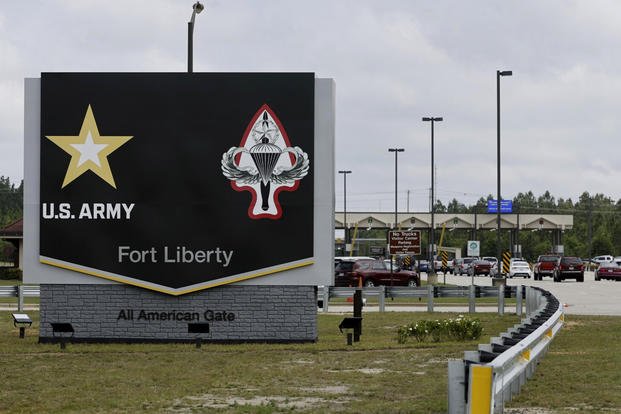

The Army is reviewing much of its training materials for ill-informed or partisan material after a terrorism briefing at Fort Liberty, North Carolina, erroneously listed mainstream activist groups, including pro-life and animal rights advocates, as terror organizations.
Images of the PowerPoint presentation went viral in July as Republican lawmakers and far-right commentators seized on part of the briefing that highlighted two non-violent anti-abortion lobbying groups as terrorists — the National Right to Life and Operation Rescue, neither of which have a history of violence.
“The Army is undertaking an Army-wide review to ensure that these or similar materials are not being disseminated elsewhere,” Agnes Schaefer, the assistant secretary of the Army for manpower and reserve affairs, told lawmakers at a House Armed Services Committee hearing on the matter Thursday. “The slides do not represent the policy or official views of the Army.”
However, Schaefer was vague on the scope of the training review and did not provide specifics.
The terrorism briefing, which has been in use since 2017, also lumped in left-wing groups such as People for the Ethical Treatment of Animals, or PETA, and conflated it with the Animal Liberation Front — an extremist group with a track record of violence, including firebombings.
The botched briefing gave GOP lawmakers an example to clinch onto after years of lambasting, often without evidence, what they say is the military’s increasing acquiescence to progressive ideals — in this case, seen as vilifying conservative anti-abortion groups. While often scarce on specifics, those critiques may have at least a marginal impact on recruiting, some Army officials fear.
But in a rare display of bipartisanship, House members from both parties on Thursday torched the Army for a lack of transparency on how the botched briefing had been used for seven years without anyone noticing basic factual errors. The briefing was built to be given to military police officers who guard Fort Liberty and train them to identify terrorists.
“How in the world does something like that go on for so long and [no one] in leadership catches it?” said Rep. Jim Banks, R-Ind., who chairs the House Armed Services Committee subpanel on military personnel.
Lt. Gen. Patrick Matlock, who oversees much of the service’s training operations, said there was no excuse for how long the training went on, yet he refused to answer questions from lawmakers when pressed over whether soldiers or civilian employees who had a hand in the training had been disciplined in any way.
“I’m not going to talk about specific accountability actions,” Matlock said when asked whether commanders at Fort Liberty had enforced any disciplinary action against soldiers who created the training.
However, no Army policy forbids disclosing punitive actions taken against a service member. Legal action is disclosed automatically, regardless of rank, through public-facing court dockets. Disciplinary actions such as demotions or firings are routinely disclosed in high-profile incidents. The general also declined to offer details without the name of the soldier disclosed, to preserve their safety.
“There’s some basic questions on basic accountability we don’t seem to be getting,” said Rep. Jill Tokuda, D-Hawaii.
The briefing and its confusion over what groups may or may not be a danger also comes as the service struggles with defining extremism — an effort across the military that was spurred by the Jan. 6, 2021, U.S. Capitol riot and a growing national threat from extremist groups such as neo-Nazis.
Much of the Army’s policy leaves it up to commanders to subjectively decide what is and isn’t appropriate behavior.
Related: Botched Army Security Briefing Labeled Anti-Abortion, Animal Activist Groups as Potential Terrorists
